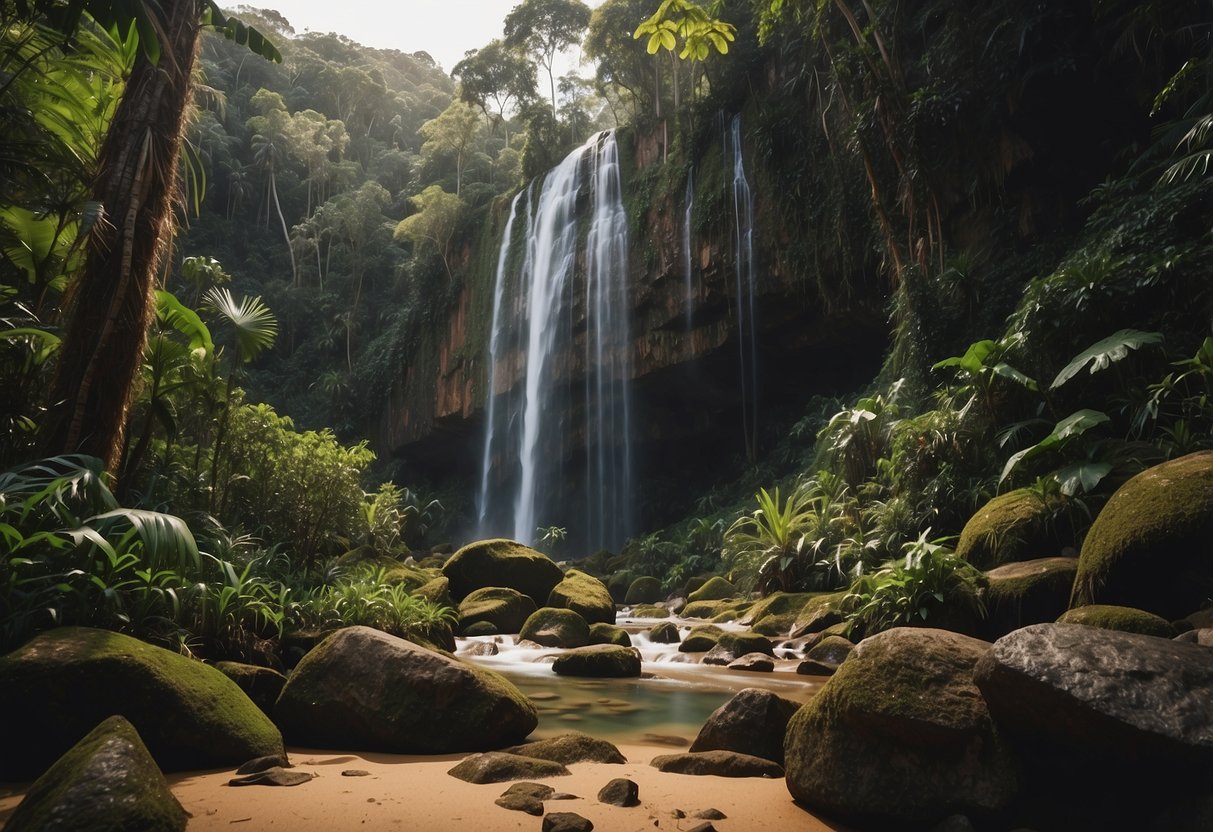
When to Go: Planning Your Trip
Deciding when to visit Madagascar significantly impacts your travel experience due to its distinct seasons. With an understanding of its climate, you can choose the best time for your adventure, whether it’s the dry or wet season.
Understanding Madagascar’s Climate
Madagascar’s climate varies notably across its regions. The island experiences two main seasons: the dry season from May to October, and the wet season from November to April. The dry season offers cooler temperatures and less rainfall, making it ideal for outdoor activities like hiking and wildlife viewing. The wet season brings heavier rainfall, particularly to the eastern and northwestern parts, which can affect travel plans. Cyclones are also a risk from January to March.
Climate change has begun to impact Madagascar, altering traditional weather patterns. Rising temperatures and unpredictable rainfall can affect everything from wildlife migrations to the condition of roads and trails. When planning your trip, it’s important to monitor current weather conditions and be prepared for variability.
Best Time to Visit
The best time to visit Madagascar generally falls within the dry season, from May to October. These months provide favorable weather for exploring natural reserves, enjoying beaches, and engaging in various outdoor activities. June to September is particularly excellent for wildlife enthusiasts as it’s the breeding season for many species, including lemurs.
Travelers interested in seeing specific events might consider planning around Madagascar’s unique festivals, like the Famadihana, a traditional ceremony held in various regions. Additionally, shoulder months, such as April and November, can offer a balance of fewer crowds and decent weather, though occasional rain is possible. Always check for updated travel advisories and weather forecasts before finalizing plans.
Discovering Madagascar’s Wildlife
Madagascar is home to an array of unique wildlife, including over 100 species of lemurs, vibrant bird species, and rich marine ecosystems. Many of these species are endemic, meaning they can be found nowhere else on Earth.
Lemurs and Endemic Species
Madagascar is synonymous with lemurs. These primates are found exclusively on this island, with over 100 species ranging from the tiny Mouse Lemur to the large Indri. Many of these species, such as the Ring-tailed Lemur, are iconic symbols of Madagascar’s biodiversity. Efforts to protect these creatures are crucial, as habitat loss and hunting pose significant threats. Madagascar also boasts a diverse array of reptiles, including chameleons and geckos, many of which are also endemic.
National Parks and Protected Areas
National parks play a vital role in preserving Madagascar’s unique ecosystems. Ranomafana National Park, for example, is renowned for its lush rainforests and hot springs, providing habitat for twelve lemur species. Isalo National Park offers dramatic sandstone landscapes and a home for the Ring-tailed Lemur. Andasibe-Mantadia National Park is a well-known destination for wildlife viewing, particularly for spotting the largest lemur, the Indri. Protecting these areas is essential to safeguarding the island’s biodiversity and its many threatened species.
Birds and Marine Life
Bird enthusiasts will find Madagascar a paradise, with nearly 300 bird species, nearly half of which are endemic. The Madagascar Fish Eagle and the rare Sokoke Scops Owl are just a few examples. The island’s coastal regions and marine parks, such as Nosy Be, host vibrant coral reefs teeming with marine life, including whales, dolphins, and an array of colorful fish. These ecosystems are as crucial as the terrestrial habitats in supporting Madagascar’s overall biodiversity.
Madagascar’s wildlife offers an unparalleled experience for nature lovers. Its unique species, diverse national parks, and rich bird and marine life highlight the island’s remarkable natural heritage.